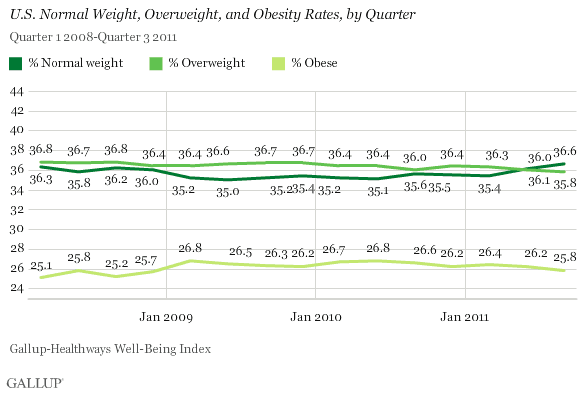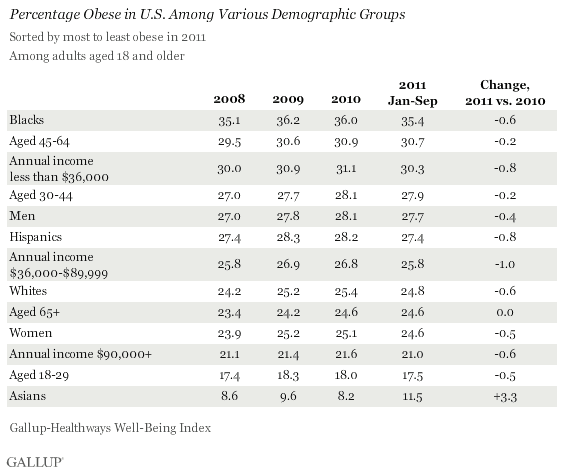Poll Watch: More Americans a Normal Weight Than Overweight
Posted on
The percentage of Americans who are overweight or obese declined slightly in the third quarter of 2011, while the percentage who are a normal weight increased. For the first time in more than three years, more Americans are a normal weight (36.6%) than are overweight (35.8%).
The overweight and normal weight trend lines have tracked closely together since Gallup and Healthways started monitoring Americans’ weight situation daily in January 2008. Though it is noteworthy that more adults are now a normal weight than overweight, it is too early to tell if this shift is temporary or permanent.
The recent slight decline in the nation’s obesity rate is a positive contrast to the rising levels found in 2009 and throughout most of 2010. However, the majority of Americans are still at an unhealthy weight — either overweight or obese (61.6%).
The Gallup-Healthways Well-Being Index uses respondents’ self-reports of their height and weight to calculate body mass index (BMI) scores. Individual BMI values of 30 or higher are classified as “obese,” 25.0 to 29.9 are “overweight,” 18.5 to 24.9 are “normal weight,” and 18.4 or less are “underweight.”
Good news, but there is still more weight to lose.
Obesity Rates Down Across Demographic Groups
Black Americans, the middle-aged, and those with low incomes remain the most likely to be obese across major demographic subgroups in an aggregate of the data collected in all three quarters of 2011 — as generally has been the case historically.
However, obesity rates for each of those groups and all others included in this analysis are either trending down or are statistically unchanged so far in 2011.
The chart:

So, what does this all mean?
Although a majority of Americans remain overweight or obese, it is a good sign that the obesity rates are trending downward. Perhaps Americans are learning more about adopting a healthy diet and exercise program. Perhaps it is the economic recession and folks are eating out less at fast-food restaurants that have menus that are high in caloric and fat content?
It is hard to say.
But, let’s hope that the trend continues in a downward direction = for better health.




